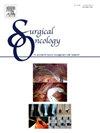Predicting incontinence and erectile function after prostate cancer surgery: International validation of models
IF 2.4
4区 医学
Q3 ONCOLOGY
引用次数: 0
Abstract
Background
Our objective is to externally validate the most accurate, published tools predicting urinary incontinence and erectile dysfunction following prostatectomy. Several models have been developed to predict the risks of adverse events, though most have not been externally validated.
Methods
Data were obtained from the Prostate Cancer Outcomes Registry of Australia and New Zealand (PCOR-ANZ). Self-reported urinary incontinence and erectile dysfunction were measured using EPIC-26 at 12 months after radical prostatectomy. Four predictive models were selected for external validation, being the top performing models from a systematic literature review. Two models related to urinary incontinence (Matsushita and Jeong) and two related to sexual function (Alemozaffar and Novara), were examined. Model discrimination was assessed by the Area Under the Received Operator Curve (AUC) and calibration was assessed.
Results
We constructed a cohort of 590 patients resident in either New Zealand or South Australia who had received a radical prostatectomy 2007–2019. The average age at diagnosis was 65 years, with most men having few comorbidities (97.1 % Charlson comorbidity index 0) and treated with robotic surgery (93.6 %). In our external validation cohort, the Almozaffar model demonstrated the highest discrimination when predicting erectile dysfunction (AUC 0.73, 95%CI 0.67–0.78). The highest discrimination achieved by a model predicting urinary incontinence was developed by Jeong (AUC 0.69, 95%CI 0.61–0.76).
Conclusions
Models predicting erectile dysfunction performed well in external validation and may be suitable for clinical use. Models predicting post-prostatectomy urinary incontinence did not perform as well on validation.
预测前列腺癌手术后尿失禁和勃起功能:模型的国际验证
研究背景:我们的目的是从外部验证预测前列腺切除术后尿失禁和勃起功能障碍的最准确、已发表的工具。已经开发了几个模型来预测不良事件的风险,尽管大多数尚未得到外部验证。方法数据来自澳大利亚和新西兰前列腺癌结局登记处(PCOR-ANZ)。在根治性前列腺切除术后12个月,使用EPIC-26测量自我报告的尿失禁和勃起功能障碍。从系统的文献综述中选择了四个预测模型进行外部验证,作为表现最好的模型。两种与尿失禁相关的模型(Matsushita和Jeong)和两种与性功能相关的模型(Alemozaffar和Novara)进行了检查。通过接收算子曲线下面积(Area Under Received Operator Curve, AUC)评估模型判别性,并进行校准评估。我们构建了一个队列,包括2007-2019年在新西兰或南澳大利亚接受根治性前列腺切除术的590名患者。确诊时的平均年龄为65岁,大多数男性几乎没有合并症(Charlson合并症指数为97.1%),并且接受了机器人手术(93.6%)。在我们的外部验证队列中,Almozaffar模型在预测勃起功能障碍时显示出最高的识别率(AUC 0.73, 95%CI 0.67-0.78)。Jeong开发的预测尿失禁模型的识别率最高(AUC 0.69, 95%CI 0.61-0.76)。结论预测勃起功能障碍的模型经外部验证效果良好,适合临床应用。预测前列腺切除术后尿失禁的模型在验证中表现不佳。
本文章由计算机程序翻译,如有差异,请以英文原文为准。
求助全文
约1分钟内获得全文
求助全文
来源期刊

Surgical Oncology-Oxford
医学-外科
CiteScore
4.50
自引率
0.00%
发文量
169
审稿时长
38 days
期刊介绍:
Surgical Oncology is a peer reviewed journal publishing review articles that contribute to the advancement of knowledge in surgical oncology and related fields of interest. Articles represent a spectrum of current technology in oncology research as well as those concerning clinical trials, surgical technique, methods of investigation and patient evaluation. Surgical Oncology publishes comprehensive Reviews that examine individual topics in considerable detail, in addition to editorials and commentaries which focus on selected papers. The journal also publishes special issues which explore topics of interest to surgical oncologists in great detail - outlining recent advancements and providing readers with the most up to date information.
 求助内容:
求助内容: 应助结果提醒方式:
应助结果提醒方式:


